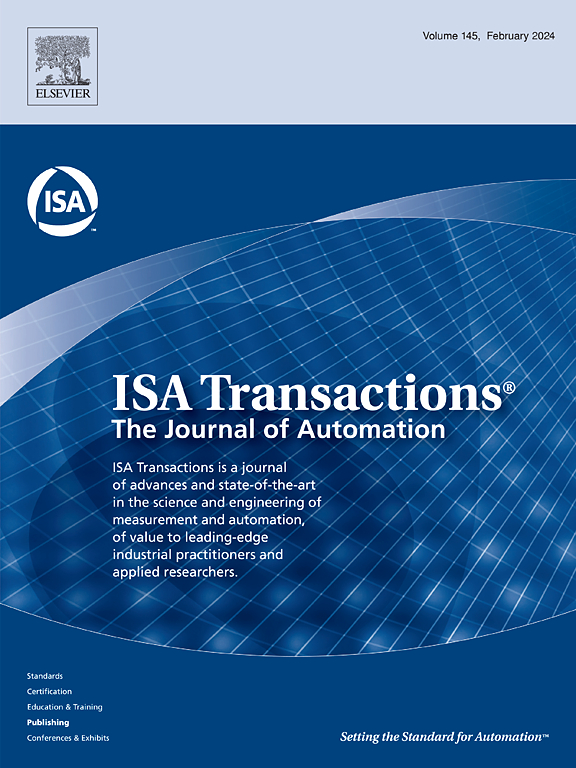在规定性能和轮胎侧向力约束下的自动地面车辆定时路径跟踪控制。
IF 6.5
2区 计算机科学
Q1 AUTOMATION & CONTROL SYSTEMS
引用次数: 0
摘要
在规定性能控制(PPC)方法中,较大的初始误差容易产生过多的输入。在自动地面车辆(agv)的路径跟踪控制中,这种过大的输入会导致较大的转向角,从而导致严重的轮胎侧滑角。在这种情况下,轮胎可能会进入非线性工作区域,产生不受控制的轮胎侧向力,并可能危及车辆的稳定性。为了解决这一问题,本文提出了一种agv路径跟踪控制协议,该协议将规定的性能约束与横向轮胎力限制相结合。具体来说,该协议通过饱和前轮胎的侧滑角来限制前轮胎的侧向力,确保它们保持在线性和安全的操作阈值范围内,从而提高车辆的稳定性。在此基础上,利用自适应律估计了轮胎动力学的未知参数,如前轮胎的转弯刚度和后轮胎径向基函数神经网络(RBFNN)中未知权值的范数。这些增强功能使所提出的协议能够实现路径跟踪控制目标,同时减轻由过多输入引起的车辆不稳定性。最后,通过硬件在环(HiL)测试验证了所提控制器的有效性,其中显示了增强的路径跟踪性能和改善的车辆稳定性。本文章由计算机程序翻译,如有差异,请以英文原文为准。
Fixed-time path following control for automated ground vehicle subject to prescribed performance and lateral tire force constraint
Large initial errors in prescribed performance control (PPC) methods are prone to generating the excessive inputs. In the context of path-following control for Automated Ground Vehicles (AGVs), such excessive inputs result in large steering angles, which can induce significant tire sideslip angles. Under these conditions, the tires may enter the nonlinear working region, generating uncontrolled lateral tire forces and potentially compromising vehicle stability. To address this issue, this paper proposes a path-following control protocol for AGVs that integrates the prescribed performance constraints with lateral tire force limitations. Specifically, the protocol constrains the lateral force of the front tires by saturating their sideslip angles, ensuring they remain within linear and safe operational thresholds to enhance vehicle stability. Furthermore, unknown parameters of tire dynamics, such as the front tires’ cornering stiffness and the norm of the unknown weights in the Radial Basis Function Neural Network (RBFNN) for the rear tires, are estimated using adaptive laws. These enhancements enable the proposed protocol to achieve path-following control objectives while mitigating vehicle instabilities caused by excessive inputs. Finally, the effectiveness of the proposed controller is validated through Hardware-in-the-Loop (HiL) tests, in which enhanced path-following performance and improved vehicle stability are demonstrated.
求助全文
通过发布文献求助,成功后即可免费获取论文全文。
去求助
来源期刊

ISA transactions
工程技术-工程:综合
CiteScore
11.70
自引率
12.30%
发文量
824
审稿时长
4.4 months
期刊介绍:
ISA Transactions serves as a platform for showcasing advancements in measurement and automation, catering to both industrial practitioners and applied researchers. It covers a wide array of topics within measurement, including sensors, signal processing, data analysis, and fault detection, supported by techniques such as artificial intelligence and communication systems. Automation topics encompass control strategies, modelling, system reliability, and maintenance, alongside optimization and human-machine interaction. The journal targets research and development professionals in control systems, process instrumentation, and automation from academia and industry.
 求助内容:
求助内容: 应助结果提醒方式:
应助结果提醒方式:


